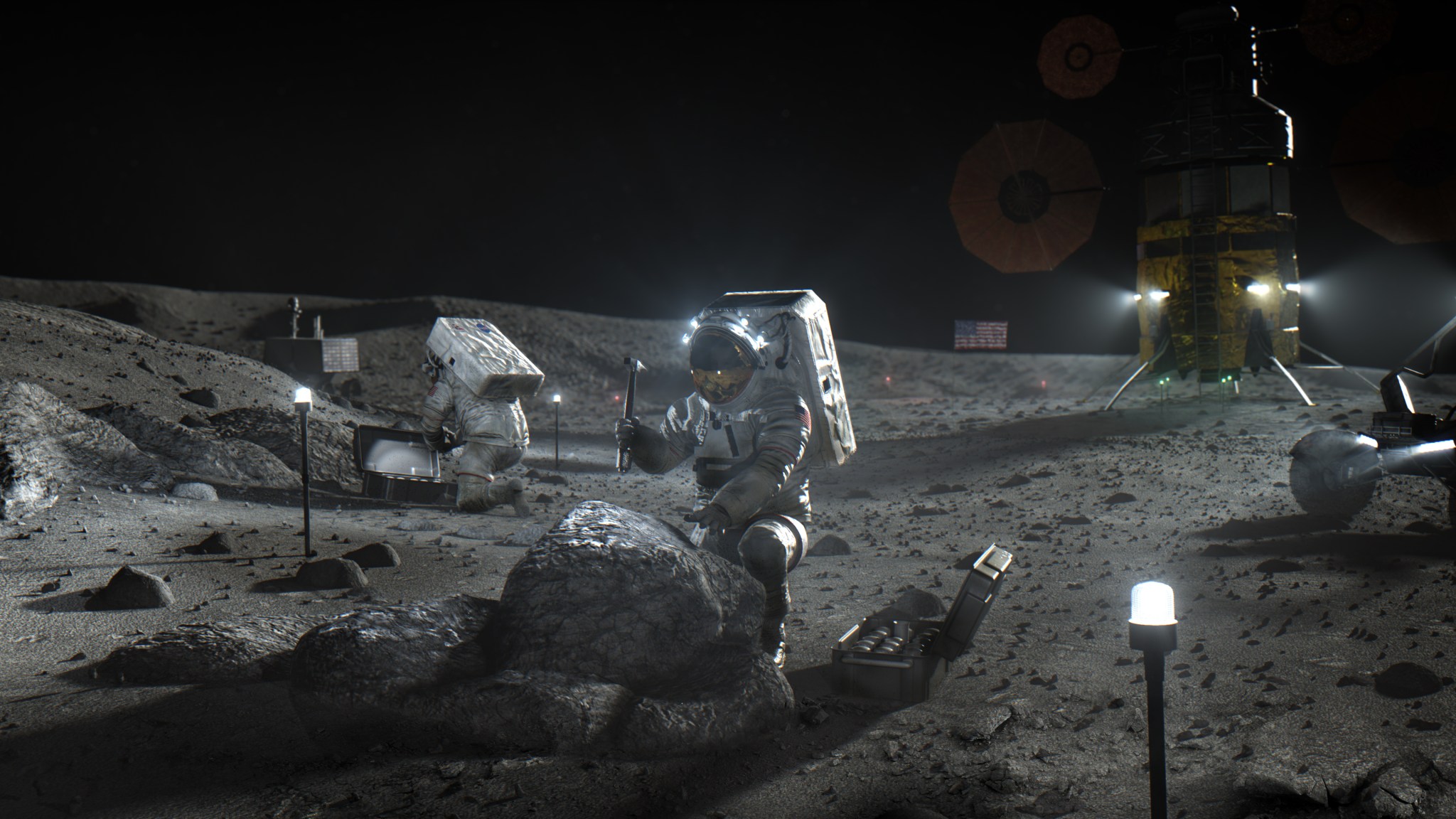Small businesses around the country have played a critical part in NASA technologies that enable our missions. As NASA returns to the Moon via the Artemis program, in an enhanced, sustainable way; the agency has selected five U.S. small businesses to receive a total of nearly $20 million to accelerate the development of novel lunar capabilities.
The investments support NASA’s Artemis strategy of collaborating with commercial partners. These technologies all aim to tackle key and critical lunar capabilities, environmental challenges, and risks. Should these efforts be successful, they will enable a range of approaches, functionality, and improvements for multiple NASA programs, missions, and collaborators in our return to the Moon.
The companies began maturing the technologies and demonstrated their potential under previous Small Business Innovation Research and Small Business Technology Transfer (SBIR/STTR) contracts. These follow-on Sequential Phase II awards aim to accelerate the development of technologies that NASA, and potential partners and commercial companies, need in the near future that will enable and enhance our sustainable lunar science and exploration. It is the second year NASA has made this small business award, valued at $2.5-5 million per company.
- Advanced Cooling Technologies Inc. in Lancaster, Pennsylvania, will mature thermal technologies into systems that may enable Moon rovers, vehicles, and landers to survive, explore, and conduct science during the frigid and long lunar night.
- Alameda Applied Sciences Corporation in Oakland, California, will develop a beyond low-Earth orbit small satellite propulsion system that will enable a range of new and more affordable approaches to distributed science missions, lunar communications networks, and more.
- Ashwin-Ushas Corp Inc. in Marlboro, New Jersey, also will advance a thermal control technology that may enable rovers to conduct science and explore more of the challenging and dynamic lunar environment, including traveling into and out of the Moon’s dark, permanently shadowed craters.
- Motiv Space Systems Inc. in Pasadena, California, is creating an integrated, scalable drive actuation system that could operate in various extreme environments. This technology could be integrated into rovers, landers, and more, for a range of movement and robotics needs; helping aid construction, maintenance, scouting, and other applications on the Moon and Mars.
- Troxel Aerospace Industries Inc. in Gainesville, Florida, will advance a new approach that may enable high performance computing avionics that are not radiation-hardened to operate in the high radiation environment beyond low-Earth orbit. This innovation could enable new avionics for radiation-tolerant spacecraft displays, spacesuit heads-up displays, improved science data processing systems, hazard avoidance systems during entry, descent, and landing, among others.
While NASA looks to benefit from the technology development, small businesses see broader benefits.
“The side effects of being able to work these programs is significant to the growth of our company,” said Tom McCarthy, vice president of Motiv Space Systems. Motiv has worked with NASA SBIR/STTR since the early 2000s. “It has allowed us to sustain, hire, and bring in new talent and keep up the technical edge for future customers that need unique solutions.”
NASA’s SBIR/STTR program worked closely with other agency programs to identify key technical challenges and risks for near-term mission requirements, demonstration possibilities, and infusion opportunities. Earlier this year, NASA released a call for white papers to previous SBIR/STTR Phase II awardees from the last decade to meet these needs. NASA invited select companies to submit full proposals. These technology acceleration efforts will be overseen in conjunction with key NASA projects, programs, and stakeholders. Future sequential calls for white papers and awards are possible.
Through the SBIR/STTR program, NASA pilots initiatives to help small businesses accelerate infusion into space missions and commercialization into the marketplace. NASA invests in disruptive capabilities in emerging markets, increasing the country’s competitive advantage and generating opportunities for job creation across the country. The program is part of the Space Technology Mission Directorate (STMD) and is managed by NASA’s Ames Research Center in California’s Silicon Valley.
For more information about NASA’s investments in space technology, visit:



























